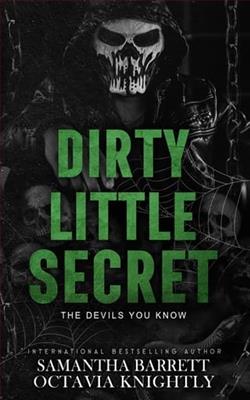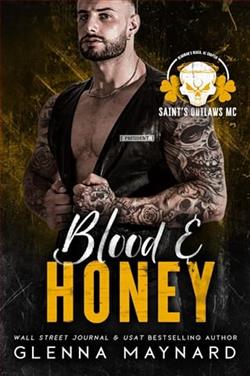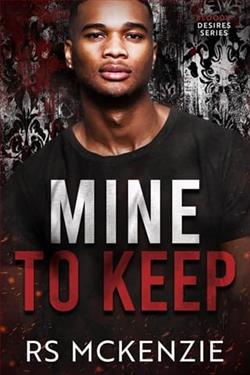Page 73 of Everything She Feared
He intensified his work but paid a price for it. For years he’d lived with Olivia Sanders, a fellowTribunereporter. They’d planned to get married, but Ryan’s deepening obsession to find his sister’s remains drove a wedge into their relationship—“I thought I could handle it,” Olivia told him one night driving home from a party, Chicago’s skyline glittering. “But I’m sorry, I can’t. I’m so sorry.”
A few years after Olivia left him, Ryan took a buyout and left the paper, using the time and his savings in a full-bore pursuit of Magda. He consistently wrote to her in prison, requesting she agree to an interview. Prison officials informed him that his requests had been denied. He continued writing until eventually his letters went unanswered.
Ryan traveled to Montana, visiting key locations he’d discovered in Magda’s life. He talked to people who had any association or memory of her. Some shared photos, letters and journals; most wanted to help, always pointing him to other possibilities.
And like his dad and Willow’s father did years before, Ryan traveled the route the girls took. Only he went all the way to Fairbanks, Alaska, and back in an effort to make a spiritual connection with Carrie. Then he drove the routes of the other victims in Montana, Idaho and Washington.
His files and expertise on the case growing, Ryan wrote an article forVanity Fairabout his quest, which the magazine featured and pegged to Magda’s then-upcoming release from prison.
Not only did hisVanity Fairpiece pay well, it yielded other dividends.
Literary agents contacted him with potential publishing deals. They said his story could be made into a network true-crime series.
“But it’s not over yet. It doesn’t have an ending,” Ryan told them, deciding to hold off.
Inspired by Ryan’s article, amateur sleuths took up his cause, giving rise to a number of online groups outraged at how Magda had beat the system. Fearing Magda had not been rehabilitated and could kill again, they were devoted to locating her wherever she tried to resume her life and warning her community that a murderer lived free among them.
Many people in the online groups passed theories, speculation and leads to Ryan. Much of it led nowhere, but he looked at everything because upon her release, facing no terms or conditions in her legally binding deal with prosecutors, Magda had vanished. And despite all of Ryan’s sources and efforts, he couldn’t find her. He’d learned that while in prison she’d earned a number of degrees and planned how she would disappear. Rumor among the online groups held that Magda had changed her appearance and her name, learned other languages and may have fled to another country to live out her life in peaceful anonymity.
Some thought that Magda may have reconnected with her daughter, who’d been taken from her as a toddler at the time of Magda’s imprisonment. Given the magnitude of Magda’s crimes, prosecutors were steadfast in ensuring Magda lost custody.
In the years since her release from prison, Ryan’s search for Magda had been futile. He’d traveled to Panama, Canada, Germany and the UK, in searches that had dead-ended. Following leads in the US, he’d searched for her in Denver, Dallas, Minneapolis, Pittsburgh and Brooklyn.
He survived by taking whatever jobs he could: Uber driver, warehouse worker, reporter. He’d house-sit, couch surf, work out long-stay rates at cheap motels, all while scouring a location for Magda and researching every aspect of her life.
Now he clicked on a news picture of Magda taken at her arrest: she’s handcuffed and staring into the camera, her eyes telegraphing bone-chilling malevolence—something dead behind them.
Ryan stared at Magda for the longest time.
I will go to the ends of the earth to find you.
Ryan turned from his laptop to the window and the rain and sipped the last of his tepid coffee.
Now he was in Seattle following a lead arising from his research and his sources indicating that Magda’s daughter was living and working in the metropolitan area, and that it was possible Magda was also here.
Have to admit, that’s a first, a tip putting them both in the same area.
He’d gone to the diner in North Seattle.
I’m just not sure about the woman working there. So many times he’d been convinced he was on the right track with other women in other cities. He was wrong every time. No, he couldn’t be sure until it was a certainty.
Ryan paused to consider a tip he’d gotten long ago from a police source in Montana. In her life-and-death struggle, the Canadian woman who’d survived had flailed wildly in the Vrykers’ van, gouging the wrist of Magda’s daughter so severely it left a permanent scar.
Ryan looked through his files. He had information for other women in other locations in the area that he was working on.
But his thoughts went back to the diner. The woman appeared to be the right age and her tattoo—if meant to hide a scar—was in the right spot.
I just don’t know. I’ve still got a lot of work to do until I am certain.
Among the skills he’d learned from his sources, who were detectives and private investigators, was how to surreptitiously collect and sift through people’s trash for useful items and information. He’d also learned how to acquire cast-off, or shed, DNA from such things as discarded napkins, gum and hair, which could be analyzed.
All of the tactics were legal and could prove to be critical. But they took time.
He yawned and rubbed his eyes. Before shutting everything down, he went to his photos from the photo booth of Carrie holding him in her lap and smiled at them. Then he turned to the window and watched the rain.
In his heart he felt something, a sensation, telling him to keep going.
I feel I’m closer now, closer than I’ve ever been.















